 |
| May 29, 2018 | Volume 14 Issue 20 |
Designfax weekly eMagazine
Archives
Partners
Manufacturing Center
Product Spotlight
Modern Applications News
Metalworking Ideas For
Today's Job Shops
Tooling and Production
Strategies for large
metalworking plants
Wheels:
The man behind the MINI -- exterior design
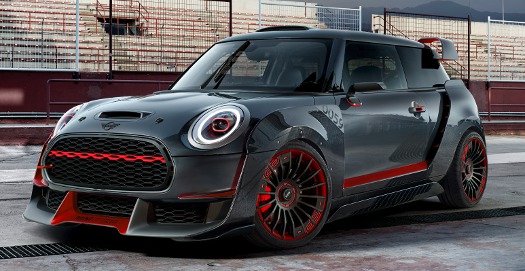
The MINI John Cooper Works GP Concept, inspired by the carmaker's legendary triumphs in the Monte Carlo Rally 50 years ago, features a pumped-up design language that embodies dynamic flair and the ultimate in driving fun -- on and off the race track.

Christopher Weil, Head of Exterior Design at MINI.
Christopher Weil is a passionate designer. Since 2013, he has been Head of Exterior Design at MINI. He has overall responsibility for the entire exterior styling of both current and future MINI models -- and concept cars. Weil's previous work for the BMW Group included designing the exterior of both the BMW 3 Series and the BMW 328 Hommage, which was unveiled in 2011 at the Concorso d'Eleganza Villa d'Este classic car and motorcycle event.
In this 10-questions interview, Weil explains why good design is something you experience as well as see, and he predicts exciting things in store for the MINI brand.
We also check out the surprisingly aggressive (but still cheeky) MINI John Cooper Works GP Concept, which first debuted at the 2017 Frankfurt Motor Show last September but is making the rounds at international car shows this year. The company has yet to disclose whether it will ever sell the racy GP Concept, even in limited numbers (like it did with the 2012 MINI John Cooper Works GP and 2006 MINI Cooper S with John Cooper Works GP Kit -- 2,000 each).
1. Why did you become a car designer?
I'd always dreamt of becoming a car designer; I had a sort of inner urge. For one thing, I've enjoyed drawing ever since I can remember -- every scrap of clean paper got scribbled all over. And I'm also fascinated by future themes, basically anything and everything that's new. Being a car designer not only lets me fulfill my passion for creativity, it gives me a chance to help shape the future. Exterior design has particular appeal for me. That feeling of seeing your "own" car driving on the road is really something special. It's my absolute dream job.
2. Where do you get your inspiration as a car designer? What spurs you on?
I draw my inspiration from positive future scenarios: Utopias. The future has always been a great place for me, a sort of improved version of now. That's also what I think our task as designers should be -- to make the future a better place, and that includes cars and mobility. As a designer, I'm also inspired and captivated by products where you can see that someone has worked long and hard on the subject matter and really got to grips with whatever the topic is. The result is often something unique. And that's exactly what I aspire to achieve with my design work: the product shouldn't just move the MINI brand forward, it should inspire others too. In other words, the emotion I've put into it should also resonate with the user and trigger something inside them.
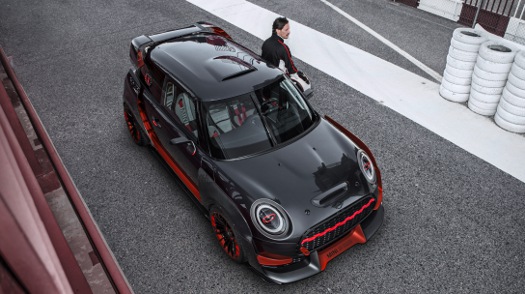
Significantly wider than the current MINI, the MINI John Cooper Works GP Concept features lightweight materials such as carbon fiber to optimize the car's power-to-weight ratio; evenly balanced weight distribution is a ticket to MINI's signature go-kart feeling.
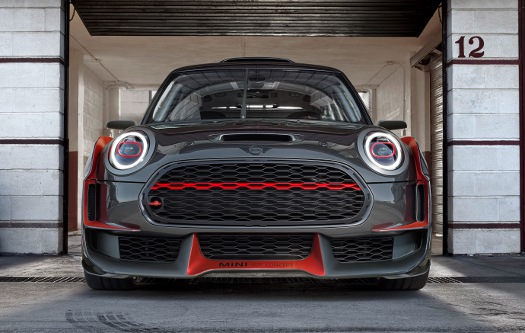
Large air intakes and precisely molded air deflectors dominate the front end, which cuts a low-to-the-road figure. Crisply cut add-on elements frame the smooth MINI silhouette and highlight the track focus of the MINI John Cooper Works GP Concept when viewed head-on.
3. What is the function of exterior design in your view?
Good exterior design is like a promise, showing what the vehicle is capable of -- and more besides. Good exterior design reveals the car's character too. This can be every bit as challenging as it is powerful. For me, good exterior design means creating an emotional tie with the beholder solely by means of the vehicle's form. To achieve this, designers have to enrich the expanse of surfaces with emotional appeal and inject a sense of motion by adding the right lines to suit the character of the vehicle at hand. The product itself has to communicate and strike a chord, without the customer needing to read an explanatory brochure first.
4. Why have you chosen to work at MINI?
MINI is an automotive icon. Everyone, big or small, knows what a MINI looks like and could probably even draw one too. More crucially, however, MINI is much more than just a product. It is a companion through daily life, it symbolizes an open-minded outlook on the world, full of optimism for the future. Our customers form a very special bond with their cars. Very few other manufacturers can say the same. The task of transporting this unique quality into the future intrigues me. And the brand has enormous untapped potential. The current MINI LIVING and MINI FASHION collaborations, for example, provide an indication of what the future might hold.
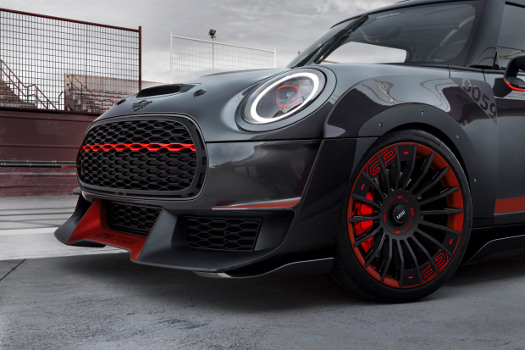
In time-honored MINI fashion, the interplay of narrowing windows and a rising shoulderline creates a wedge shape from the side and gives the car the appearance of powering forward even before it turns a wheel. Lower down, voluminous surfaces fuse into a muscular body and endow the flanks with agility and dynamism. The car number 0059 refers to the year the classic Mini was born: 1959.
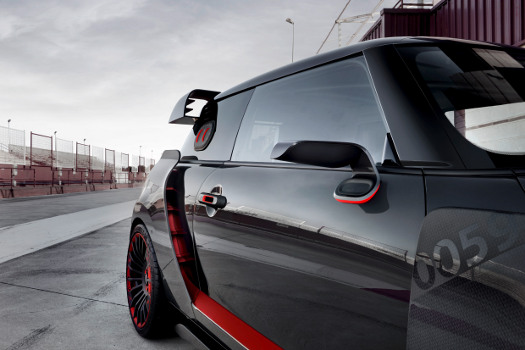
Carbon-fiber side skirts provide the body with its lowest edge on the GP Concept. Nineteen-inch racetrack lightweight wheels in classical multi-spoke design underline the concept's more aggressive style.
5. What makes a MINI so special for you personally?
It's difficult to put into words. At its essence, a MINI is something very special -- it's approachable, nearly human. Rather than the emotions that can be stirred by the workings of a high-tech machine, a MINI is more about the relationship with the driver. MINI conveys some of its driver's personality, while also having a character of its own. MINI owners identify with the product to a far greater degree than customers of other brands. MINI is an extraordinary experience, one I enjoy myself -- when I get into my MINI and drive off, it simply makes me happy. So you really can call it a close relationship. MINI does all of that. And it's something we want to take to a whole new level in the future.
6. What is it that makes the MINI design special?
The MINI DNA -- in other words, what Sir Alec Issigonis sought to achieve with the classic Mini -- has a special formula. It's about a product whose every detail is well thought out and fulfills a purpose. The surfaces of the brand's cars have always had a very clean-cut, almost pared down feel. It's "pure car" -- i.e. purity of form (rather than dispensing with non-essentials). This has had the additional effect of creating a strong, iconic design. The challenge lies in refining such an icon without blurring the identity of MINI in the process. The friendly appearance of its cars is another special MINI trait. For years now, MINI has resisted the temptation to give its design a more aggressive tone -- despite all the sporting prowess on offer. There is, after all, no denying the go-kart qualities, as I was able to experience first-hand on an Alpine rally I took part in a while back. There was some strong competition from supercars, yet the MINI still ran rings round everyone. It was a highly impressive display, and tremendous fun too.
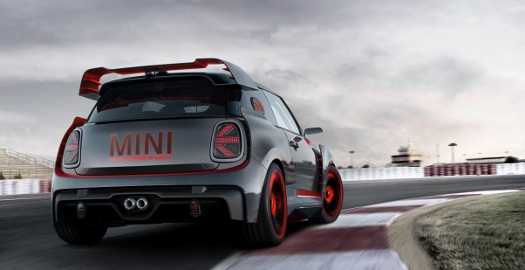
Sophisticated touches, such as the half-Union Jack on each side, represent a nod to the concept car's British origins, while also providing a sporty, technical flourish. The can't-miss-it prominent roof spoiler matches the side elements and tops off a futuristic, spaceship feel.
7. What would you say are important issues for the future?
For me, digitization is one of the key issues. MINI is going digital, but I imagine it will do so in a somewhat warmer, more personal and human way than other brands of car. People will continue to come first at MINI, not technology. Our technology will, of course, still be state-of-the-art. And in some areas we will even lead the way, such as with customization using 3D printing, which will allow MINI customers to design and fit parts themselves. But it won't be all about the technology, rather the experience will be king. Car design is also set to become increasingly connected, and its scope will extend far beyond what we see now. Today, we basically still just design the shape of a car, but in the future we will be working on far more. A wealth of possibilities is opening up, which makes the whole thing very exciting.
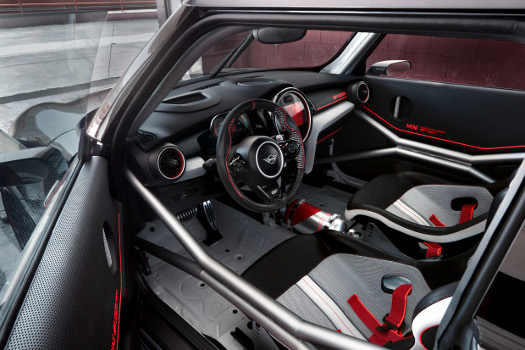
As digitalization takes over (even for MINIs), the display is now in large-screen format in the GP Concept, just next to the large emergency cut-off button. The traditional MINI toggle switches with start/stop button provide a bridge between the digital and analog worlds. The race-inspired concept also includes a mounted fire extinguisher. Note this car is paddle shift only.
8. So, what role will exterior design have to play in future?
Exterior design will still be important. Even if, at some point in the distant future, MINI is nothing more than a mobile box (to exaggerate things slightly), no matter how ultra-modern and pared down the box looks, it will still transmit the brand's core values. Design is essentially communication. The emotional bond that is formed with vehicles starts with their exterior, as it's the first touchpoint of any car. Nurturing this relationship -- indeed, ensuring there is a relationship in the first place -- is what we seek to do at Exterior Design. It will still be our job as designers to make a MINI instantly recognizable as a MINI.
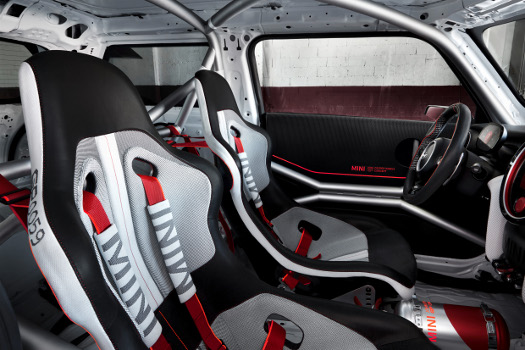
The interior of the MINI John Cooper Works GP Concept is pared back to its core elements, its roll cage joined by little more than a pair of low-mounted bucket seats with five-point belts and a cleanly designed instrument panel. Gearshift is by paddles on the steering wheel. Some parts of the doors and instrument panel were 3D printed. This car is clearly meant for racing diehards.
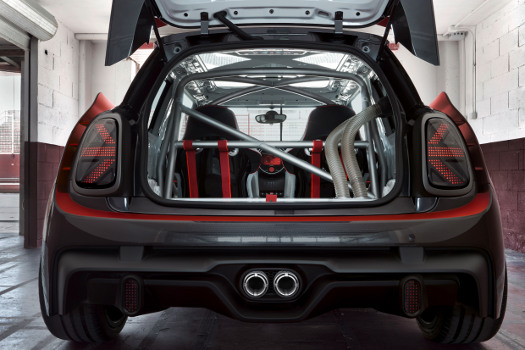
Missing from the interior is a rear seat bench, headliner, and conventional door trim panels. Instead, the surfaces between the elements of the roll cage and the rear compartment are trimmed in lightweight panels with textured details and a hexagonal pattern. This creates a transition between the unadorned rear and more design-rich front cabin. The doors are opened using recessed grips with fabric straps, leaving the driver and passenger to clamber out over the roll cage in the usual racing-car style.
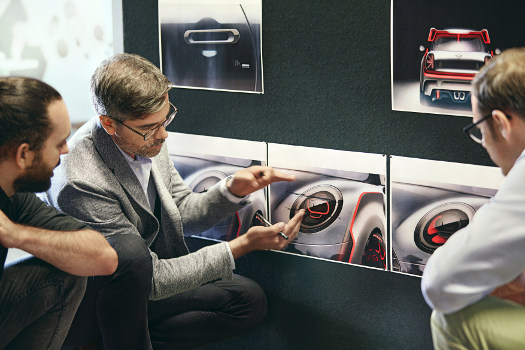
Weil at work on the MINI John Cooper Works GP Concept.
9. What will be the identifying features of a MINI in future?
I think that there will continue to be design elements that create identity and therefore make MINI as recognizable as ever. The contrasting roof is without doubt a fundamental MINI characteristic, as is the MINI "face" with its hexagonal radiator grille. I see these two elements as the core visual features of MINI, clear identity creators. Everything else is variable and offers scope for further development. But I think there will still be a need for iconic design elements in the future.
10. You have overseen the new facelift for the MINI Hatch (3-door and 5-door). Don't you think it's a bit subtle, when compared to the previously stated vision for the future of MINI?
Model updates -- or Life Cycle Impulses, as they are also known -- always involve treading a fine line between innovating and preserving. I'm personally of the opinion that design thrives on this contrast. The modifications and impulses of the current model update can be found in the smaller details, and they are both right for the car and in touch with the times. Features that were soft before have a more contrasting effect on the updated models. There is more definition in the MINI logo, for instance, while the wheels and lights have likewise been given a much sharper look. The contrast with the surrounding soft surfaces creates a far more modern appearance. New exterior colors, rear lights with a Union Jack design, and the option of customizing the side scuttles and trim strips through MINI Yours offer our customers some very intriguing new features, and sees us taking a big step into the future.
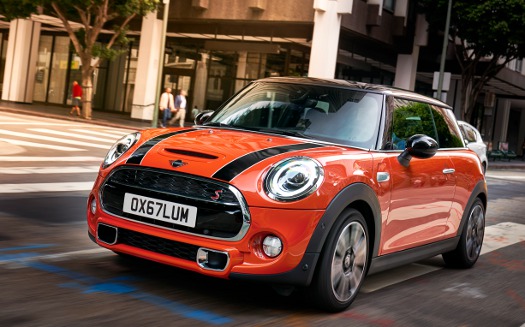
The latest updates to the real-world MINI Hardtop (and its companions the MINI Hardtop 4 Door and MINI Convertible) feature a more "natural" and subtle evolution of the brand's design language -- and demonstrate that Weil and his team have a sophisticated and wide design range that often demands considered restraint.
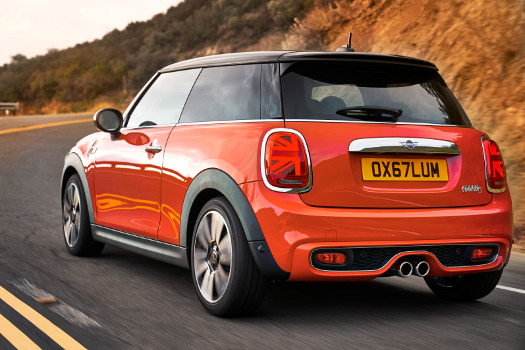
Changes for 2019 include new customization options, digital services from MINI Connected, fresh exterior accents, a modified LED headlight design, and the new Union Jack-inspired taillights.
Source: The BMW Group
Published May 2018
Rate this article
View our terms of use and privacy policy
